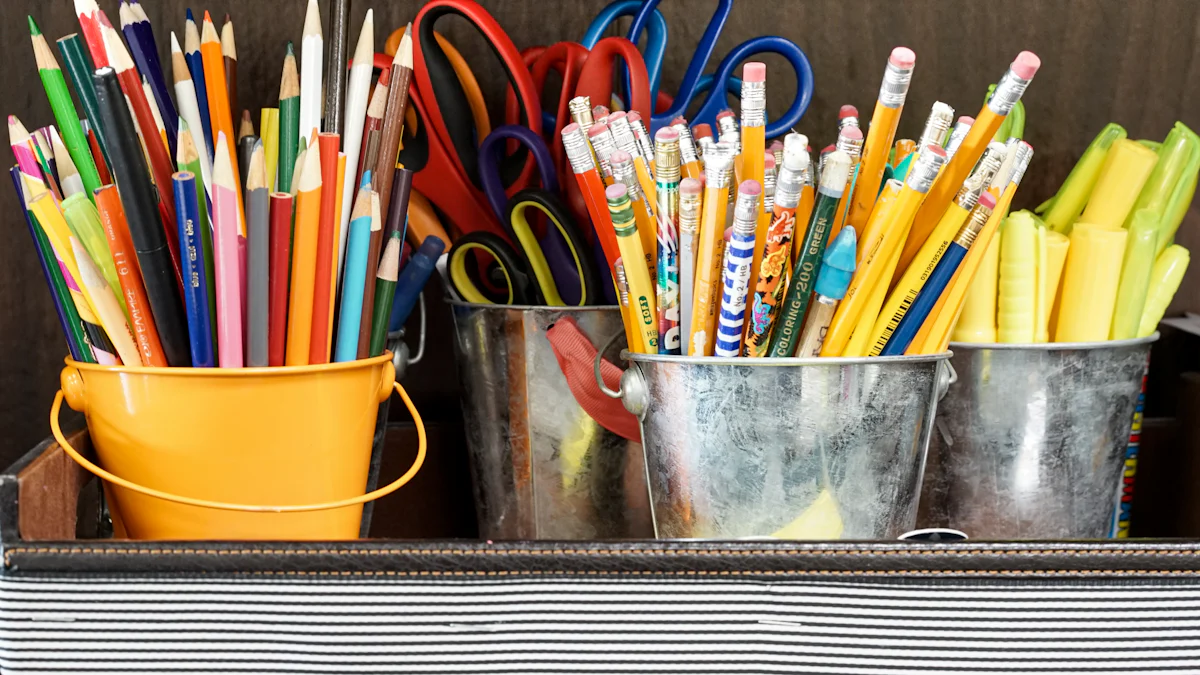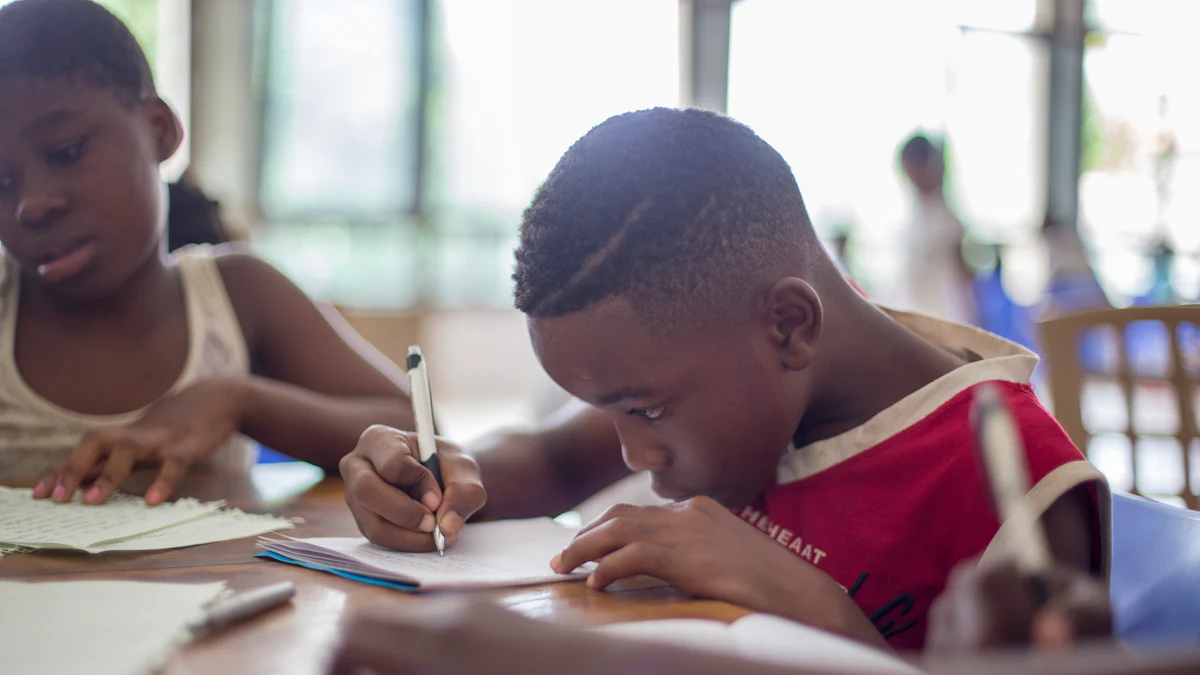How to Prepare Your Child for the Start of a New School Year

Prepare your child for a new school year is essential. Kids require emotional, practical, and social readiness. A smooth transition helps reduce anxiety and boosts confidence. Engage in conversations about feelings and expectations. Create routines that foster stability. Encourage friendships to ease social interactions. These steps ensure a positive start. Parents play a vital role in this preparation. Focus on building excitement and curiosity. A well-prepared child embraces new experiences with enthusiasm.
Emotional Preparation
Discussing Feelings
Encouraging Open Communication
Kids often feel anxious about starting a new school year. Encourage your child to talk about their feelings. Ask questions like, "What are you excited about?" or "Do you have any worries?" These questions help your child open up. Make sure to listen actively. Show genuine interest in what your child says. This builds trust and makes your child feel heard.
Validating Emotions
Every emotion your child feels is valid. Acknowledge these emotions by saying things like, "It's okay to feel nervous." This helps your child understand that feeling anxious or excited is normal. Validation boosts confidence. Your child learns that emotions are part of life. This understanding can make the transition smoother.
Setting Intentions and Goals
Creating a Positive Mindset
A positive mindset can transform your child's school experience. Encourage your child to focus on the good things. Talk about fun activities or new friends they might make. Positivity can reduce anxiety. It helps your child approach challenges with enthusiasm. A positive outlook can lead to a successful school year.
Establishing Personal Goals
Setting goals gives your child something to strive for. Help your child set achievable goals. These could be academic, like improving in math, or social, like making new friends. Discuss how to reach these goals. Break them into smaller steps. Celebrate each achievement, no matter how small. This process builds motivation and a sense of accomplishment.
Practical Preparations
Gathering School Supplies
Making a Checklist
Start by creating a checklist of essential school supplies. A checklist helps you stay organized and ensures nothing gets missed. Consider items like backpacks, lunchboxes, folders, writing utensils, notebooks, tissues, hand sanitizer, and water bottles. Adjust the list based on your child's grade and school requirements. Having everything ready boosts confidence and makes the first day smoother.
Involving Your Child in Shopping
Involve your child in the shopping process. Let your child pick out supplies they like. This involvement makes your child feel excited about the new school year. Shopping together also provides a chance to talk about school and what to expect. Preparing your child in this way builds anticipation and ownership.
Establishing a Daily Routine
Setting Bedtime and Wake-up Times
Establish a consistent bedtime and wake-up routine. A regular sleep schedule helps your child adjust to school hours. Start this routine a few weeks before school begins. Consistency ensures your child feels rested and ready for the day. A good night's sleep improves focus and mood.
Planning Homework and Study Time
Set aside specific times for homework and study. Create a quiet and comfortable space for your child to work. Encourage short breaks to keep focus sharp. Planning study time helps your child manage tasks and reduces stress. Preparing your child with a routine fosters responsibility and independence.
Familiarizing with the School Environment

Visiting the School
Touring the Campus
A campus tour gives your child a sense of the school's layout. Walk around the school grounds with your child. Point out important buildings and areas. Show your child where classes will take place. A campus tour helps your child feel more comfortable on the first day.
Meeting Teachers and Staff
Introduce your child to teachers and staff before school starts. A friendly face can ease first-day jitters. Ask teachers about classroom expectations. Discuss any concerns you or your child might have. Meeting teachers creates a connection and builds trust.
Understanding School Layout
Locating Classrooms
Help your child locate classrooms ahead of time. Walk through the hallways and find each classroom. Show your child where to go when the bell rings. Knowing the way reduces stress and boosts confidence.
Identifying Key Areas (cafeteria, library)
Identify key areas like the cafeteria and library. Show your child where to eat lunch and check out books. Explain how to use these spaces. Familiarity with key areas makes daily routines smoother. Your child will feel more at home in the new environment.
Social Preparation
Arranging Playdates
Reconnecting with Old Friends
Kids often feel more comfortable when they see familiar faces. Arrange playdates with old friends before school starts. This helps kids rekindle friendships and feel less anxious. Kids can share summer stories and talk about the upcoming school year. Playdates create a sense of belonging and ease the transition.
Meeting New Classmates
Meeting new classmates can be exciting and nerve-wracking. Organize gatherings where kids can meet their future classmates. These can be informal meet-ups at a park or a community center. Kids get to know each other in a relaxed setting. Familiarity with new faces makes the first day of school less intimidating. Kids feel more confident walking into a classroom full of known peers.
Fostering Friendships
Encouraging Group Activities
Group activities foster teamwork and friendship. Encourage your child to join clubs or sports teams. These activities provide opportunities to meet peers with similar interests. Kids learn to work together and build strong bonds. Group activities teach valuable lessons in cooperation and communication. Kids develop a sense of camaraderie and support.
Teaching Social Skills
Role-play different social scenarios to practice responses. Role-play different social scenarios to practice responses.
Addressing Potential Anxieties

Recognizing Signs of Anxiety
Observing Behavioral Changes
Kids might show anxiety in different ways. Watch for changes in sleep patterns or appetite. Notice if your child becomes more withdrawn or irritable. These shifts can signal stress about school. Early recognition helps in addressing concerns quickly.
Listening to Concerns
Encourage your child to share worries. Ask questions like, "What's on your mind?" or "Anything bothering you about school?" Open conversations create a safe space. Kids feel more comfortable expressing fears when they know someone listens.
Providing Reassurance
Sharing Positive Experiences
Share your own school experiences. Talk about fun memories and how you overcame challenges. Stories can inspire confidence. Kids learn that others have faced similar feelings and succeeded.
Offering Support and Encouragement
Offer constant support. Remind your child of past successes. Encourage them to focus on strengths and abilities. Celebrate small victories together. Support builds resilience and helps kids face new school year challenges with courage.
Preparing your child for a new school year involves several key steps. Focus on emotional readiness by discussing feelings and setting goals. Practical preparations like gathering supplies and establishing routines help create stability. Familiarizing your child with the school environment eases first-day jitters. Encourage social interactions through playdates and group activities. Address any anxieties by recognizing signs of anxiety and offering reassurance.
With these strategies, you set the stage for a successful school year. Your support helps your child flourish, just like Brian did with the right interventions. Embrace the journey with excitement and positivity!
See Also
Guiding Your Child Through Anxiety with Care
Simple Ways to Assist Children in Handling Stress
Refresh and Revitalize: Supporting Your Child After a Tough Day
Strategies for Dealing with Your Child's Behavior Challenges

